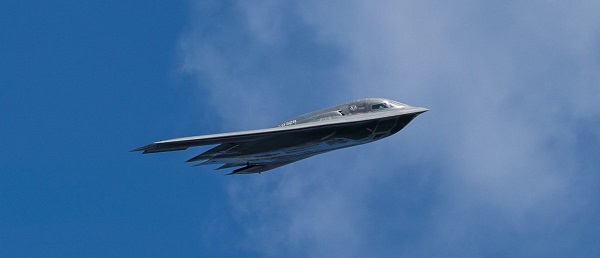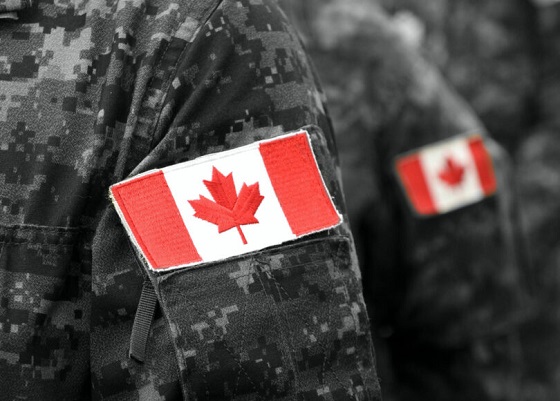armed forces
The Case for Peter Hegseth — Time To Try Something Different

By S.L. Nelson
Success in today’s world favors smart, creative leaders who can quickly adapt and make decisions that benefit their organizations. President-elect Donald Trump’s choice of Pete Hegseth to lead the Department of Defense marks a significant shift from his first administration.
Hegseth, with fewer ties to the traditional defense establishment, is expected to transform the department in two vital areas: First, he will expose generals and admirals who act out of self-interest; second, he will refocus the military on its core function of lethality — the use or threat of deadly force to win wars and deter enemies.
Hegseth’s appointment threatens senior military officers who are more concerned with their legacy than with mission accomplishment. These officers feel susceptible to changes that will threaten their carefully curated norms. Many current leaders have avidly promoted DEI (Diversity, Equity and Inclusion) and CRT (Critical Race Theory), and Hegseth’s threat to remove these programs stokes their fears. These leaders have promoted subordinates who share their views, creating a cycle of making leaders in their own image. To break this cycle, Hegseth will also need to ensure that general officers are held accountable for the officers they promote. These actions will ensure that his and President Trump’s ‘Warrior Boards’ achieve their desired effect and weed out the right leaders.
Civilian leaders and politicians should also scrutinize the retired officers who placed these generals in their positions in the first place. If multiple legacies are at risk, flag officers will develop and implement more objective metrics for recommending general officer positions.
Hegseth’s leadership will refocus the Department of Defense on its core purpose. By removing ineffective leaders who prioritize social theories over military effectiveness, he will eliminate a major obstacle. These changes will encourage accountability and forward-thinking approaches. A clear message will echo from the top down that adapting to change means manning, training, and equipping the military to win wars, rather than allowing military officers to succumb to the self-loathing which places individual egos above selfless service to the country.
Adapting to change is also the responsibility of military commanders. Officers command Army organizations. It is significant that in some branches of the United States Army, up to half the officers do not desire to compete for Battalion Command. Many reasons include burnout and the threat of investigations that are launched ad nauseam in a zero-defect environment. The Army cannot be effective if officers do not want to command. Commanders hesitate to enforce standards in this environment because an unhappy subordinate can ruin their career with a retaliatory allegation. If an investigation is launched, commanders worry that general officers will dispose of these allegations negatively rather than appear lenient. Secretary Hegseth will support his commanders because his commander in chief supports him.
Not supporting your subordinate commanders has vital consequences for national security. A glaring example of a lack of support for the Department of Defense is demonstrated by the contempt of the Chinese in answering Defense Secretary Lloyd Austin’s phone calls and his apparent indifference to it. “I think we’ll continue … to stress how important it is, and hopefully Minister Wei will schedule that call,” Austin told CNN.
One can hardly imagine Hegseth having the same attitude as Secretary Austin. Trump proved during his first term, with sanctions and recently renewed threats of another trade war with China, that his government will support its Defense Department by imposing harsh sanctions and other measures. This whole-of-government approach will allow Hegseth to focus on the military and make its interactions with foreign militaries more effective.
In fact, the Trump transition team is already laying the groundwork for forward-leaning tariff plans through legislation. Because legislation will make it harder to have subsequent administrations revoke these actions, the Defense Department will benefit from a more permanent government position when it comes to the exercise of economic power. Hegseth will, thus, occupy an even stronger position to engage with military threats to the United States with supporting economic policies that are not just unilateral executive actions by the Trump administration.
President-elect Trump’s selection of Pete Hegseth frees the Department of Defense from being anchored in the change dynamics of the past. Current and future change undercurrents cannot be managed with legacy processes. Leaders must adapt and be free to act outside of institutional norms, especially those tied to a selfish cycle of self-promotion and government social experiments rather than the effectiveness of the Department of Defense.
This article was originally published by RealClearDefense and made available via RealClearWire.
S.L. Nelson has served from the tactical to strategic level as a military officer. His views are his own and do not represent the position of the U.S. DoD.
armed forces
Global Military Industrial Complex Has Never Had It So Good, New Report Finds


From the Daily Caller News Foundation
The global war business scored record revenues in 2024 amid multiple protracted proxy conflicts across the world, according to a new industry analysis released on Monday.
The top 100 arms manufacturers in the world raked in $679 billion in revenue in 2024, up 5.9% from the year prior, according to a new Stockholm International Peace Research Institute (SIPRI) study. The figure marks the highest ever revenue for manufacturers recorded by SIPRI as the group credits major conflicts for supplying the large appetite for arms around the world.
“The rise in the total arms revenues of the Top 100 in 2024 was mostly due to overall increases in the arms revenues of companies based in Europe and the United States,” SIPRI said in their report. “There were year-on-year increases in all the geographical areas covered by the ranking apart from Asia and Oceania, which saw a slight decrease, largely as a result of a notable drop in the total arms revenues of Chinese companies.”
Notably, Chinese arms manufacturers saw a large drop in reported revenues, declining 10% from 2023 to 2024, according to SIPRI. Just off China’s shores, Japan’s arms industry saw the largest single year-over-year increase in revenue of all regions measured, jumping 40% from 2023 to 2024.
American companies dominate the top of the list, which measures individual companies’ revenue, with Lockheed Martin taking the top spot with $64,650,000,000 of arms revenue in 2024, according to the report. Raytheon Technologies, Northrop Grumman and BAE Systems follow shortly after in revenue,
The Czechoslovak Group recorded the single largest jump in year-on-year revenue from 2023 to 2024, increasing its haul by 193%, according to SIPRI. The increase is largely driven by their crucial role in supplying arms and ammunition to Ukraine.
The Pentagon contracted one of the group’s subsidiaries in August to build a new ammo plant in the U.S. to replenish artillery shell stockpiles drained by U.S. aid to Ukraine.
“In 2024 the growing demand for military equipment around the world, primarily linked to rising geopolitical tensions, accelerated the increase in total Top 100 arms revenues seen in 2023,” the report reads. “More than three quarters of companies in the Top 100 (77 companies) increased their arms revenues in 2024, with 42 reporting at least double-digit percentage growth.”
armed forces
Carney’s ‘Shared Sacrifice’ Is a Lie. Only Veterans Are Bleeding for This Budget

How the 2025 Federal Budget Demands More From Those Who’ve Already Given Everything
I’ve lived the word sacrifice.
Not the political kind that comes in speeches and press releases the real kind. The kind Mark Carney wouldn’t know if it slapped him in the face. The kind that costs sleep, sanity, blood. I’ve watched friends trade comfort for duty, and I’ve watched some of them leave in body bags while the rest of us carried the weight of their absence. So when the Prime Minister stood up this year and told Canadians the new budget would “require sacrifice,” I felt that familiar tightening in the gut the one every veteran knows. You brace for impact. You hope the pain lands in a place that makes sense.
It didn’t.
Kelsi Sheren is a reader-supported publication.
To receive new posts and support my work, consider becoming a free or paid subscriber.
Six months into Mark Carney’s limp imitation of leadership, it’s painfully clear who’s actually paying the bill. The 2025 budget somehow managing to bleed the country dry while still projecting a $78-billion deficit shields the political class, funnels money toward his network of insiders, and then quietly hacks away at the one department that should be sacrosanct: Veterans Affairs Canada.
If there’s one group that’s earned the right to be spared from government-imposed scarcity, it’s the people who carried this country’s flag into danger. Veterans don’t “symbolize” sacrifice they embody it on the daily And when Ottawa tightens the belt on VAC, the consequences aren’t abstract. They’re brutal and direct, causing nothing but more death and destruction. But Mark Carney doesn’t lose sleep over veterans killing themselves.
Punishment disguised as budgeting for a veteran means the difference between keeping a roof or sleeping in a truck. Punishment disguised as budgeting means PTSD left untreated until it turns a human being into another suicide statistic. Punishment disguised as budgeting means a veteran choosing between groceries and medication because some number-shuffler in Ottawa wants to pretend they’re being “responsible.”
This isn’t fiscal restraint it’s political betrayal wrapped in government stationery. Ottawa sells it as hard choices, but the hardness always falls on the backs of the same people: the ones who already paid more than their share, the ones who can’t afford another hit. Carney and his cabinet won’t feel a thing. Not one missed meal. Not one sleepless night. Not one flashback.
But the men and women who already paid in flesh? They’re the ones being told to give more.
That’s not sacrifice.
That’s abandonment dressed up as fiscal policy.
And Canadians need to recognize it for what it is a government that demands loyalty while refusing to give any in return. The fine print in the government’s own documents reveals what the slogans won’t.
Over the next two years, VAC plans to cut $2.227 billion from its “Benefits, Services and Support” programs. [2] Broader “savings initiatives” reach $4.4 billion over four years, much of it through reductions to the medical-cannabis program that thousands of veterans rely on to manage chronic pain and PTSD. [3] Independent analysts estimate yearly losses of roughly $900 million once the cuts are fully implemented. [4]
To put that in perspective: no other department is seeing reductions on this scale. Not Defence, not Infrastructure, not the Prime Minister’s Office thats for damn sure. Only the people who’ve already paid their debt to this country are being asked to give again.
The government’s line is tidy: “We’re not cutting services we’re modernizing. Artificial Intelligence will streamline processing and improve efficiency.”
That sounds fine until you read the departmental notes. The “modernization” translates into fewer human case managers, longer waits, and narrower eligibility. It’s austerity dressed up as innovation. I’ve coached veterans through the system. They don’t need algorithms; they need advocates who understand trauma, identity loss, and the grind of reintegration. They need empathy, not automation.
This isn’t abstract accounting. Behind every dollar is a life on the edge, the human cost and toll is very real.
- Homelessness: Veterans make up a disproportionate number of Canada’s homeless population. Cutting benefits only deepens that crisis.
- Mental Health: Parliament’s ongoing study on veteran suicide shows rising rates of despair linked to delays and denials in VAC services. [5] Knowing MAID for mental illness alone in 2027 will take out a significant amount of us.
- Food Insecurity: A 2024 VAC survey found nearly one in four veterans reported struggling to afford basic groceries. That’s before these cuts.
We talk about “service” like it ends with deployment. It doesn’t. Service continues in how a nation cares for those who carried its battles, and this doesn’t include the cannabis cut to medication or the fight’s we have to fight when they tell us our injuries are “not service related”
The insult is magnified by the timing. These cuts were announced just days before November 11 Remembrance Day, when Canadians bow their heads and say, “We will remember them.”
Apparently, the government remembered to draft the talking points but forgot the meaning behind them, not a single one of the liberal government should have been allowed to show their faces to veteran’s or at a ceremony. They’re nothing but liars, grifters and traitors to this nation. Yes I’m talking about Jill McKnight and Mark Carney.
The budget still runs the second-largest deficit in Canadian history. [6]
Veteran cuts don’t fix that. They barely dent it. What they do is let the government say it’s “finding efficiencies” while avoiding the real structural overspending that created the problem in the first place. When a government chooses to protect its pet projects and insider contracts while pulling support from veterans, that’s not fiscal discipline it’s moral cowardice. The worst part is that This isn’t an isolated move. It fits a six-month pattern: large, attention-grabbing announcements about “reform,” followed by fine print that concentrates power and shifts burden downward. Veterans just happen to be the first visible casualty.
The same budget expands spending in other politically convenient areas green-transition subsidies, digital-governance infrastructure, and administration while the people who once embodied service are told to tighten their belts.
As a combat veteran, I know what it’s like to come home and realize that the fight didn’t end overseas it just changed terrain. We fought for freedom abroad only to watch bureaucratic neglect wage a quieter war here at home. Veterans don’t ask for privilege. They ask for respect, for competence, for follow-through on the promises this country made when it sent them into harm’s way.
Here’s what really needs to change, the liberal government has to go, thats step one. Restore VAC funding immediately. Any “savings” plan that touches benefits, services, or support should be scrapped. End the AI façade. Efficiency can’t replace empathy. Keep human case workers who understand the veteran experience. Audit and transparency. Publish a detailed breakdown of where VAC funds are cut and who approved it. Canadians deserve to see the receipts. National accountability. Every MP who voted for this budget should face veterans in their constituency and explain it, face-to-face.
Budgets are moral documents. They show what a country values. By slashing VAC while running record deficits, this government declared that veterans are expendable line items, not national obligations. The Prime Minister promised “shared sacrifice.” But the only people truly sacrificing are the ones who already gave more than most Canadians ever will.
Sacrifice isn’t about spreadsheets; it’s about service. It’s what every veteran understood when they raised their right hand. This government’s brand of sacrifice asking wounded soldiers to pay for political mismanagement isn’t austerity. It’s abandonment.
Canada owes its veterans more than a wreath once a year. It owes them respect written into every budget, not erased from it.
KELSI SHEREN
Footnotes
[1] The Guardian, “Canada’s 2025 Federal Budget Adds Tens of Billions to Deficit as Carney Spends to Dampen Tariffs Effect,” Nov 5 2025.
[2] True North Wire, “Liberal Budget to Cut $4.23 Billion from Veterans Affairs,” Nov 2025.
[3] StratCann, “Budget 2025 Includes Goal of Saving $4.4 Billion in Medical Cannabis Benefits,” Nov 2025.
[4] Canadian Centre for Policy Alternatives, “Where Will the Federal Government Cut to Pay for Military Spending and Tax Cuts?” Nov 2025.
[5] House of Commons Standing Committee on Veterans Affairs, “Study on Veteran Suicide and Sanctuary Trauma,” ongoing 2025.
[6] CBC News, “Federal Budget 2025 Deficit Second Largest in Canadian History,” Nov 2025.
Kelsi Sheren is a reader-supported publication.
To receive new posts and support my work, consider becoming a free or paid subscriber.
-

 C2C Journal2 days ago
C2C Journal2 days agoWisdom of Our Elders: The Contempt for Memory in Canadian Indigenous Policy
-

 Sports2 days ago
Sports2 days agoEgypt, Iran ‘completely reject’ World Cup ‘Pride Match’ plan
-

 National15 hours ago
National15 hours agoCanada’s free speech record is cracking under pressure
-

 Alberta2 days ago
Alberta2 days agoAlberta introducing three “all-season resort areas” to provide more summer activities in Alberta’s mountain parks
-

 Business18 hours ago
Business18 hours agoTaxpayers Federation calls on politicians to reject funding for new Ottawa Senators arena
-

 Energy6 hours ago
Energy6 hours agoMeet REEF — the massive new export engine Canadians have never heard of
-

 Business18 hours ago
Business18 hours agoAlbertans give most on average but Canadian generosity hits lowest point in 20 years
-

 Automotive2 days ago
Automotive2 days agoThe $50 Billion Question: EVs Never Delivered What Ottawa Promised




